This is the simplest way I have found to form a corner in a piece of barstock.
I first came across this method in an issue of Jerry Hoffmann’s
Blacksmith’s Journal.
| 1. The barstock is heated in the immediate vicinity of what will be the
corner. |
 |
| 2. A wedge-shaped slitting tool is driven into the piece approximately
7/8 of the way through the stock. |
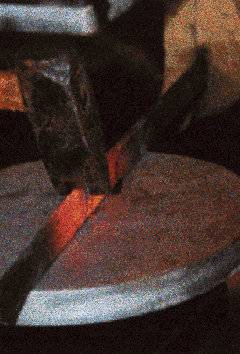 |
| 3. The cut is then opened up over the edge of the anvil. |
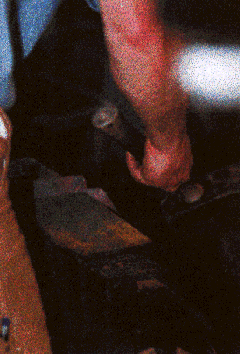 |
| 4. It is bent all the way into a right angle. |
 |
| 5. Using a ball peen hammer, one edge is scarfed. |
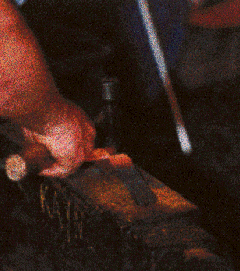 |
| 6. And then the other edge is scarfed. |
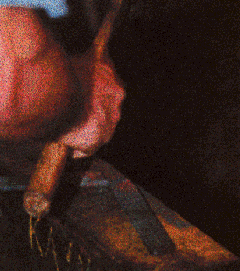 |
| 7. The piece is then gently bent back onto itself 180o,
overlapping the two scarfs. |
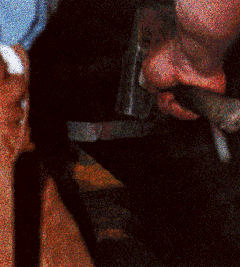 |
| 8. The corner is put back into the fire and forge welded, using several
light blows. |
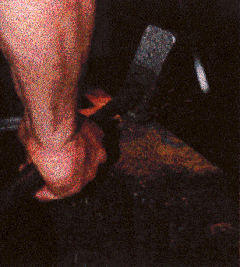 |
| 9. It is put back into the fire again and the weld is finished up. |
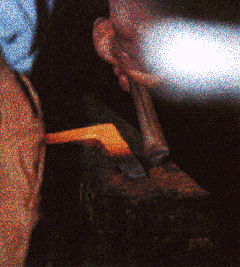 |
| 10. The corner is squared up over the face of the anvil. |
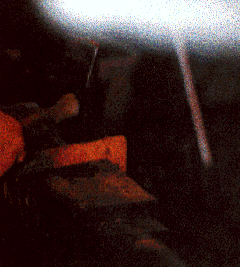 |
| 11. Both the corner at the heel of the anvil and the side of the anvil
are used to true up the piece. |
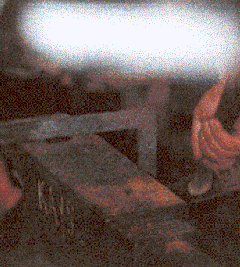 |
| 12. A fullering tool is used for ornamentation. The first series of blows
are very light to mark the line. |
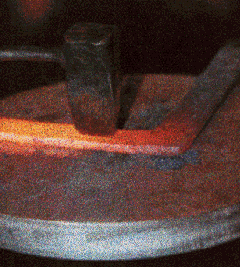 |
| 13. Heavier blows are then used to form the fullering. |
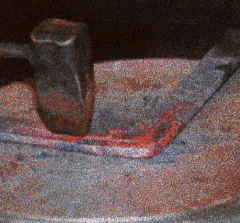 |
| 14. And there you have the finished corner, which can be used in any
number of ornamental ironwork pieces. |
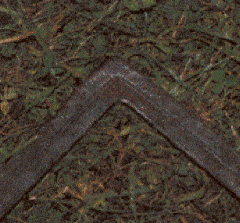 |













